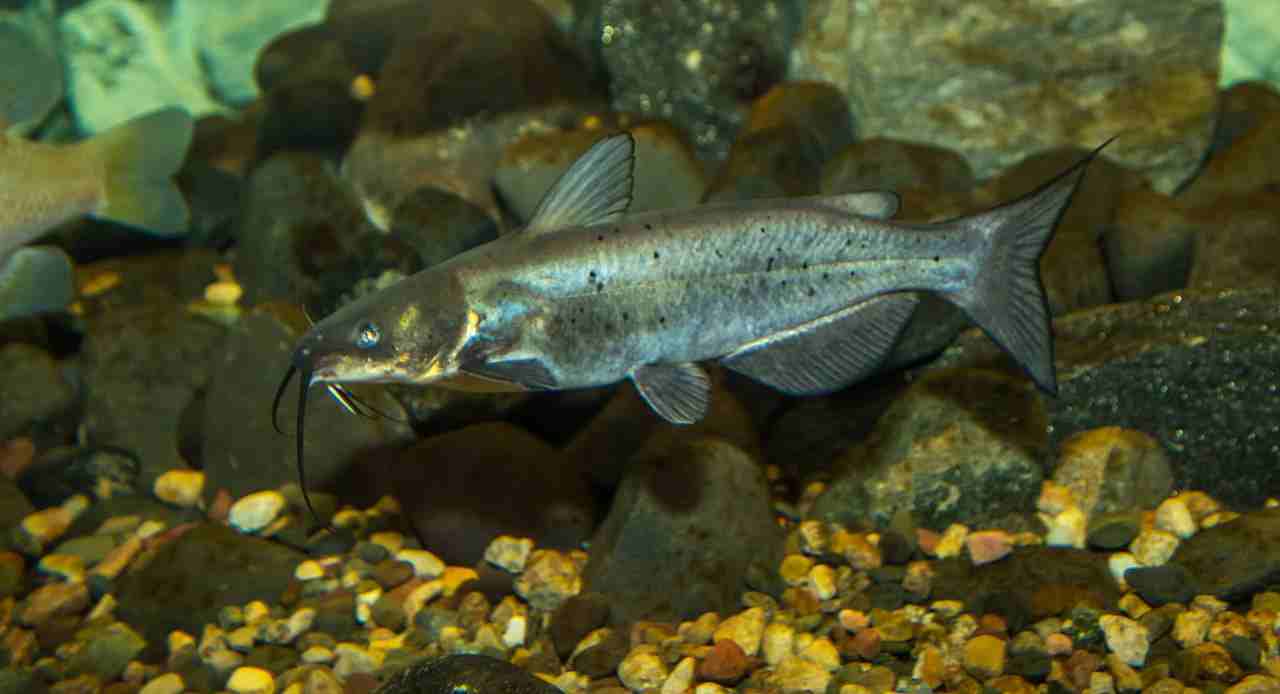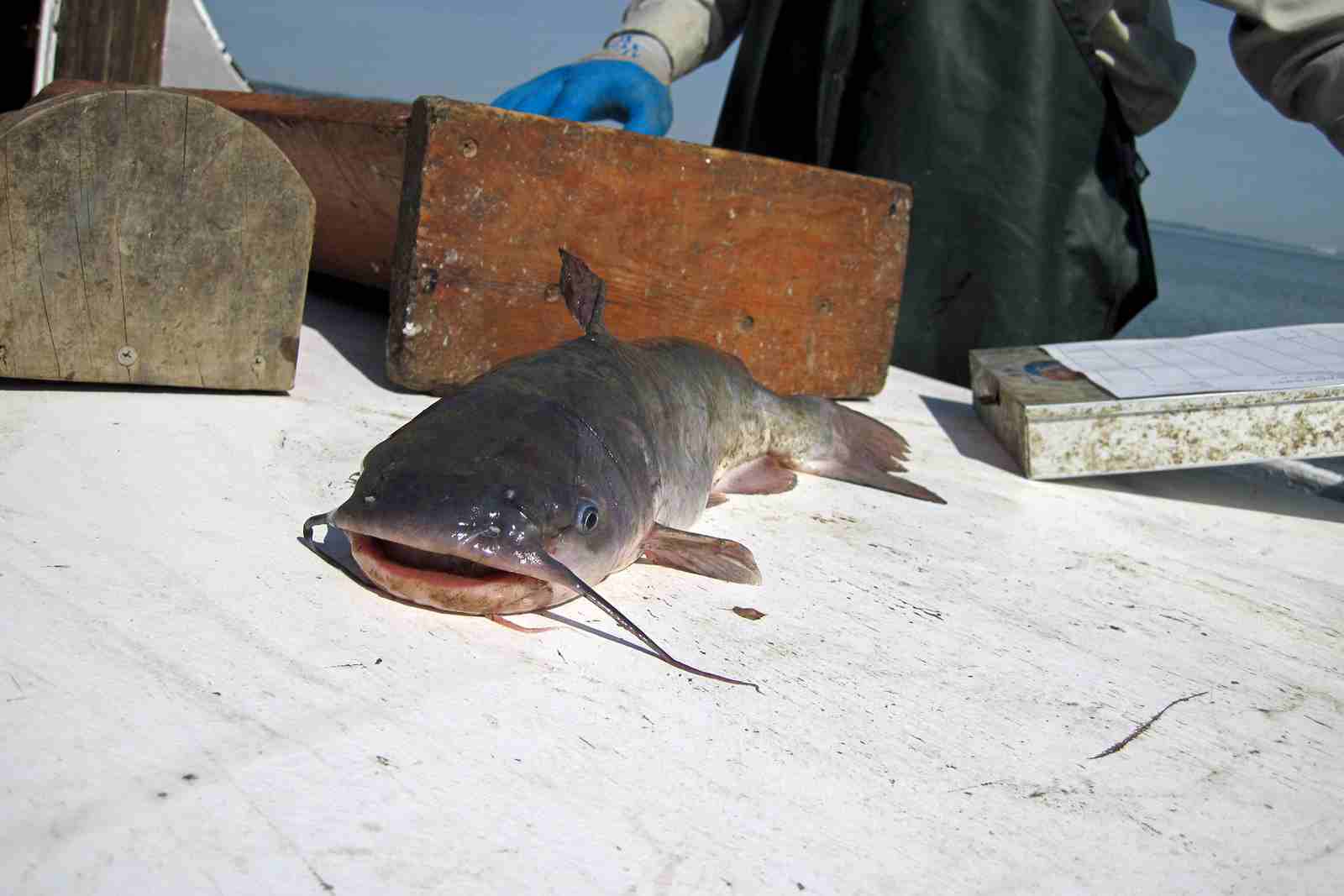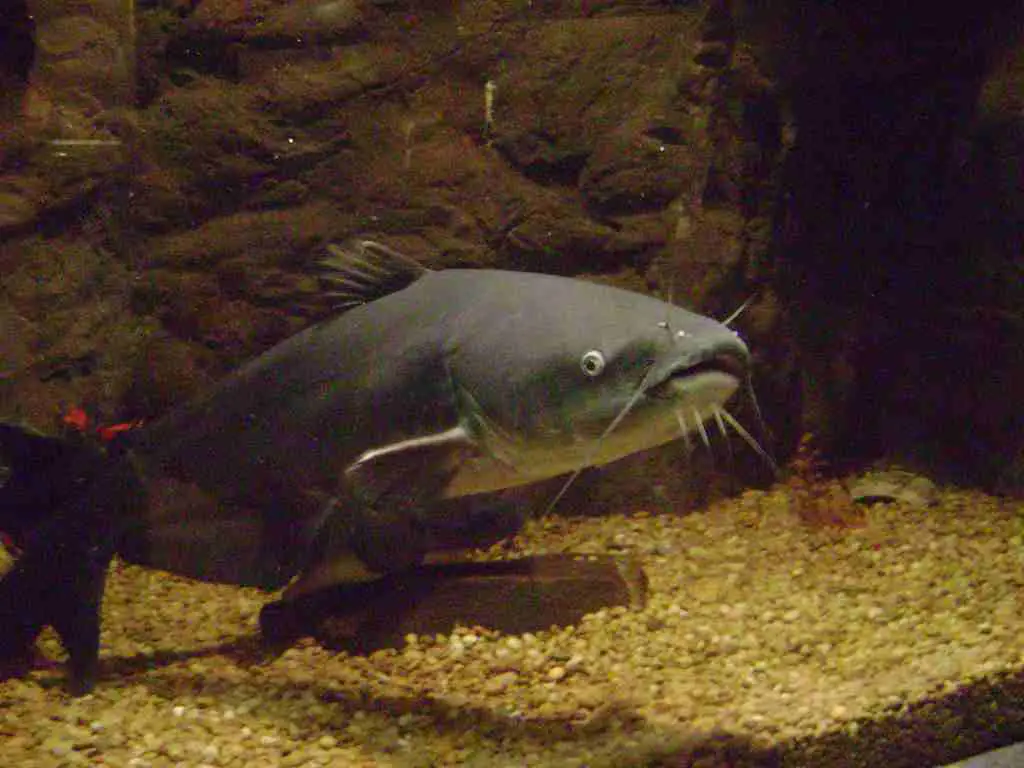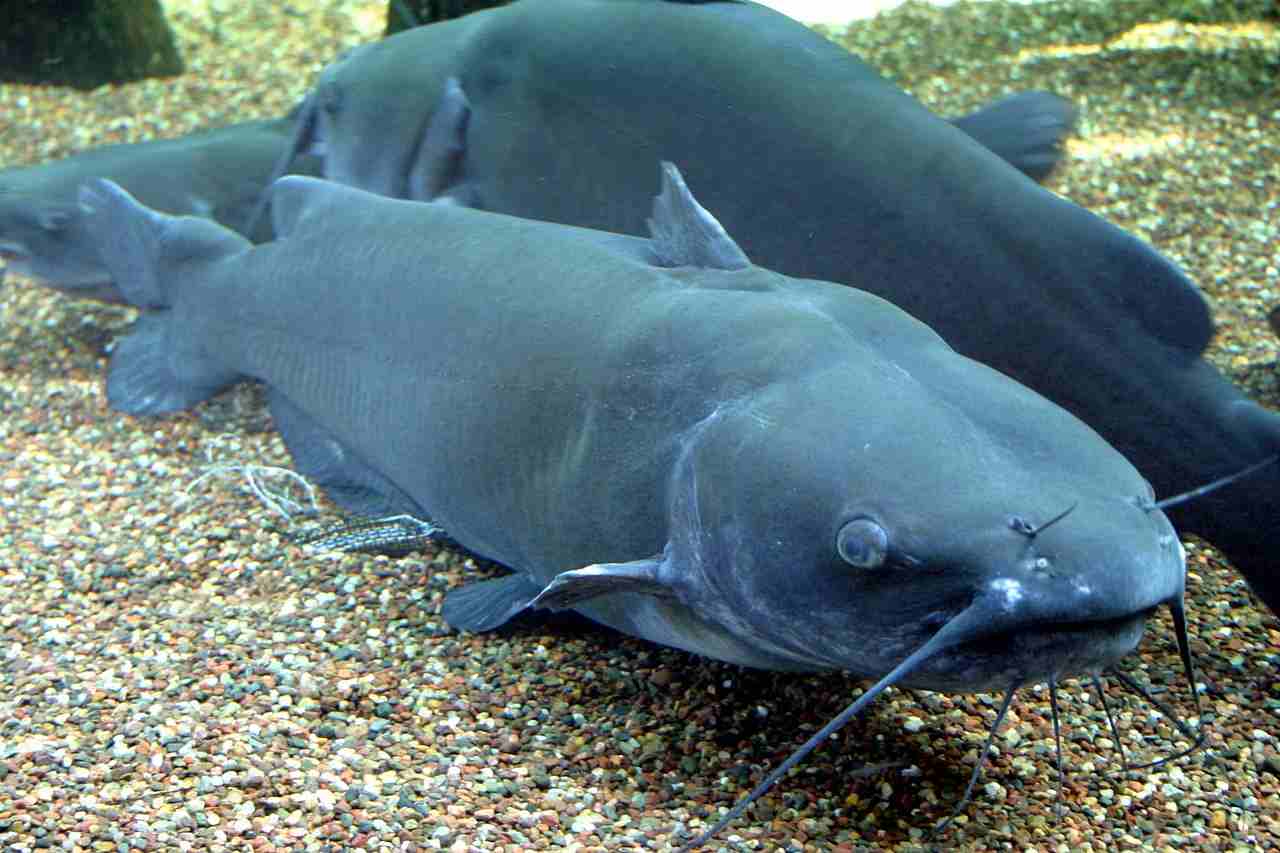Blue Cat Vs Channel Cat Taste, Cleaning, Cost, and Ecological Comparison
Comparing the Blue Catfish and Channel Catfish illuminates fascinating distinctions in the aquatic world. These two catfish species, with their unique physical attributes and behaviors, present an intriguing contrast. In a comparison, the Blue Catfish, known for its faster growth, larger size, and appealing taste, could emerge as the superior species.
Blue Catfish vs Channel Catfish: A Dive into Aquatic Contrasts
I. Physical Appearance:
– The Blue Catfish is distinguishable by its bluish-gray hue, while the Channel Catfish tends to exhibit a lighter coloration with scattered dark spots. These distinctive features contribute to their visual contrast in aquatic environments.
II. Size and Growth Rate:
– Blue Catfish often outpace Channel Catfish in both size and growth rate, attaining larger dimensions and reaching maturity at a faster pace within aquatic ecosystems.

III. Weight Disparity:
– In terms of weight, Blue Catfish tend to be heavier, showcasing their robust physique compared to the generally lighter Channel Catfish, contributing to their dominance in aquatic realms.
IV. Behavioral Differences:
– Blue Catfish are characterized by a more active swimming style, while Channel Catfish are often associated with bottom-dwelling behaviors, reflecting their distinct approaches to navigating aquatic environments.
V. Culinary Considerations:
– The Blue Catfish is favored for its appealing taste, attributed to its diet that is less centered on being a predominant bottom feeder, in contrast to the Channel Catfish. This culinary distinction adds to the allure of the Blue Catfish for those seeking a delectable seafood experience.
VI. Fin Morphology and Rays:
– Examining the fin morphology and rays reveals subtle differences between the two species. The Blue Catfish may display variations in fin structure and ray patterns, contributing to its unique aquatic profile.
VII. Economic Impact:
– Blue Catfish, with their faster growth, larger size, and desirable taste, often command a higher price in the market compared to Channel Catfish. This economic disparity reflects the perceived value associated with the Blue Catfish’s size, weight, and culinary appeal.

VIII. Weighing Aquatic Attributes:
– Prospective enthusiasts of aquaculture and seafood must carefully weigh the differences in appearance, size, behavior, and taste between Blue Catfish and Channel Catfish to make informed decisions in their aquatic endeavors.
*Details of Comparison
| Criteria | Blue Cat | Channel Cat |
| Taxonomy | Family: Ictaluridae |
Family: Ictaluridae
|
| Genus: Ictalurus | Genus: Ictalurus | |
| Species: furcatus |
Species: punctatus
|
|
| Appearance | Slate-blue to silver coloration |
Olive-brown with dark spots
|
| Forked tail, adipose fin present |
Forked tail, adipose fin present
|
|
| Size | > 5 feet | ~ 2 feet |
| Weight | > 100 pounds | 5 – 25 pounds |
| Cost | Higher market price |
Typically more affordable
|
| Cleaning | More labor-intensive | Easier to clean |
| Taste | Firm and mild |
Tender with slightly sweet flavor
|
| Nutritional Value | Rich in omega-3 fatty acids |
Good protein content
|
| Speed in Water | Moderate swimming speeds |
Moderate swimming speeds
|
| Senses | Keen olfactory receptors |
Acute senses, strong sense of smell
|
| Overall Physical Capacity | Robust and powerful | Agile |
| Habitat Preference(s) | Larger rivers and reservoirs |
Various freshwater habitats
|
| Tracks | Limited visible tracks |
Limited visible tracks
|
| Lifespan | > 20 years | 10 – 15 years |
| Mode of Feeding | Predatory | Omnivorous |
| Intelligence | Exhibit intelligent hunting behaviors |
Display problem-solving abilities
|
| Social Behavior | Generally solitary |
Tends to be more social
|
| Mode of Reproduction | Spawn in cavities or structures |
Nest in submerged areas, lay adhesive eggs
|
| Parental Behavior | Limited parental care, males guard nests |
Both male and female may guard the nest
|
| Proximity to Human-Inhabited Areas | Found in larger rivers, occasionally in reservoirs near human settlements |
Commonly found in various freshwater bodies, including ponds and lakes close to human habitation
|
| Behavior Toward Humans | Generally cautious and elusive |
Can be more tolerant of human presence
|
| Danger Posed to Humans | Rarely pose a danger; generally non-aggressive |
Generally non-aggressive, poses little danger to humans
|
| Associated Precautions | Caution required when handling larger specimens |
Standard precautions during handling
|
| Conservation Status | Conservation status varies regionally, some populations face threats |
Generally stable, not currently listed as a species of concern
|
Key Points
Blue Cat:
-
-
- Larger size (> 5 feet) and heavier (> 100 pounds).
- Higher market price.
- Longer lifespan (> 20 years).
- Primarily predatory in feeding habits.
- Generally cautious and elusive behavior toward humans.
- Requires more labor-intensive cleaning.
- Conservation status varies regionally, with some populations facing threats.
-
Channel Cat:
-
-
- Smaller size (~ 2 feet) and lighter (5 – 25 pounds).
- Typically more affordable.
- Shorter lifespan (10 – 15 years).
- Omnivorous in feeding habits.
- Tends to be more social.
- Easier to clean.
- Generally stable conservation status, not currently listed as a species of concern.
-
1. Taxonomy
Blue Cat:
Family: Ictaluridae
Genus: Ictalurus
Species: furcatus
Channel Cat:
Family: Ictaluridae
Genus: Ictalurus
Species: punctatus
2. Appearance (Including Fin Morphology)

Blue Cat:
Distinguished by a slate-blue to silver coloration
Forked tail, adipose fin present
Channel Cat:
Typically olive-brown with dark spots
Forked tail, adipose fin present
Comparison:
Blue cats exhibit a distinct blue-silver hue, while channel cats are characterized by an olive-brown shade with spots.
Both share a similar fin morphology with forked tails and adipose fins.
Ecological Implications:
Camouflage differences may influence prey-predator dynamics in their respective habitats.
3. Size
Blue Cat:
Can reach lengths of over 5 feet
Channel Cat:
Typically smaller, reaching lengths of around 2 feet
Comparison:
Blue cats generally grow larger than channel cats.
Ecological Implications:
Size impacts trophic interactions and role within the ecosystem.
4. Weight

Blue Cat:
Can weigh over 100 pounds
Channel Cat:
Usually weighs between 5 to 25 pounds
Comparison:
Blue cats are significantly heavier compared to channel cats.
Ecological Implications:
Weight influences energy requirements and potential impact on prey populations.
5. Cost
Blue Cat:
Higher market price due to size and demand. May reach $50 per pound. Specific prices and pricing schemes vary from one region to another.
Channel Cat:
Typically more affordable. May reach $19 per pound
Comparison:
Blue catfish usually command a higher market value.
Ecological Implications:
Economic incentives may impact fishing practices and population dynamics in fisheries.
6. Cleaning

Blue Cat:
Larger size may require more effort to clean
Channel Cat:
Easier to clean due to smaller size
Comparison:
Cleaning blue cats can be more labor-intensive than cleaning channel cats.
Ecological Implications:
Harvesting larger blue cats might have implications for fishing practices and processing facilities.
7. Taste
Blue Cat:
Often described as firm and mild
Channel Cat:
Tender with a slightly sweet flavor
Comparison:
Taste preferences may vary, but both are generally favored for their culinary qualities.
Ecological Implications:
Culinary preferences may impact fishing pressures on each species.
8. Nutritional Value

Blue Cat:
Rich in omega-3 fatty acids
Channel Cat:
Nutrient-rich with a good protein content
Comparison:
Both provide nutritional benefits, with blue cats offering higher omega-3 content.
Ecological Implications:
Nutrient cycling in ecosystems influenced by the diet and decomposition of these species.
9. Speed in Water (Km/hour or Mile/hour)
Blue Cat:
Capable of moderate swimming speeds
Channel Cat:
Similar moderate swimming speeds
Comparison:
Both species exhibit comparable swimming speeds.
Ecological Implications:
Swimming capabilities may affect foraging efficiency and predator avoidance.
10. Senses

Blue Cat:
Well-developed senses, especially keen olfactory receptors
Channel Cat:
Acute senses, including a strong sense of smell
Comparison:
Both species rely heavily on their senses, particularly olfaction.
Ecological Implications:
Sensory adaptations play a role in their ability to navigate and locate prey in their habitats.
11. Overall Physical Capacity
Blue Cat:
Robust and powerful, well-suited for predatory behavior
Channel Cat:
Agile and adapted for hunting smaller prey
Comparison:
Blue cats are generally more robust, while channel cats exhibit agility.
Ecological Implications:
Physical adaptations influence ecological roles and interactions within their ecosystems.
12. Habitat Preference(s)
Blue Cat:
Prefer larger rivers and reservoirs
Channel Cat:
Inhabit a variety of freshwater habitats, including smaller rivers and ponds
Comparison:
Blue cats show a preference for larger water bodies compared to the more versatile channel cats.
Ecological Implications:
Habitat preferences impact the distribution and abundance of each species.
13. Tracks
Blue Cat:
Limited visible tracks due to aquatic habitat
Channel Cat:
Similarly limited visible tracks
Comparison:
As aquatic species, both leave minimal visible tracks on land.
Ecological Implications:
Limited impact on terrestrial environments due to their aquatic lifestyle.
14. Lifespan
Blue Cat:
Can live over 20 years in favorable conditions
Channel Cat:
Typically lives 10 to 15 years
Comparison:
Blue cats generally have a longer lifespan compared to channel cats.
Ecological Implications:
Lifespan affects population dynamics and resilience to environmental changes.
15. Mode of Feeding
Blue Cat:
Predatory, feeding on fish and other aquatic prey
Channel Cat:
Omnivorous, consuming a varied diet including fish, insects, and plants
Comparison:
Blue cats are primarily piscivorous, while channel cats have a more varied diet.
Ecological Implications:
Feeding habits influence their roles in nutrient cycling and trophic interactions.
16. Intelligence
Blue Cat:
Exhibit intelligent hunting behaviors
Channel Cat:
Display problem-solving abilities
Comparison:
Both species show signs of intelligence, adapting to their environments.
Ecological Implications:
Intelligence impacts their ability to exploit resources and respond to environmental changes.
17. Social Behavior

Blue Cat:
Generally solitary, except during breeding season
Channel Cat:
Tend to be more social, forming loose groups
Comparison:
Channel cats show a greater tendency for social behavior compared to the more solitary blue cats.
Ecological Implications:
Social dynamics influence resource competition and reproductive strategies.
18. Mode of Reproduction
Blue Cat:
Typically spawn in cavities or structures
Channel Cat:
Prefer nesting in submerged areas, laying adhesive eggs
Comparison:
Different reproductive behaviors with blue cats favoring cavities, while channel cats use submerged areas.
Ecological Implications:
Reproductive strategies impact habitat requirements and nesting site availability.
19. Parental Behavior
Blue Cat:
Limited parental care, with males guarding nests
Channel Cat:
Both male and female may guard the nest
Comparison:
Channel cats exhibit more active parental care compared to blue cats.
Ecological Implications:
Parental care influences survival rates of offspring and overall population dynamics.
20. Proximity to Human-Inhabited Areas

Blue Cat:
Found in larger rivers, occasionally in reservoirs near human settlements
Channel Cat:
Commonly found in various freshwater bodies, including ponds and lakes close to human habitation
Comparison:
Channel cats show a higher likelihood of inhabiting areas in close proximity to human settlements.
Ecological Implications:
Human activities in these areas may impact water quality and habitat availability.
21. Behavior Toward Humans
Blue Cat:
Generally cautious and elusive
Channel Cat:
Can be more tolerant of human presence
Comparison:
Blue cats tend to exhibit a more cautious behavior towards humans compared to channel cats.
Ecological Implications:
Behavioral differences may influence their vulnerability to fishing pressure and human disturbances.
22. Danger Posed to Humans

Blue Cat:
Rarely pose a danger; generally non-aggressive
Channel Cat:
Generally non-aggressive, poses little danger to humans
Comparison:
Both species are not considered dangerous to humans.
Ecological Implications:
Limited danger to humans reduces the likelihood of negative interactions and conflicts.
23. Associated Precautions
Blue Cat:
Caution required when handling larger specimens
Channel Cat:
Standard precautions during handling
Comparison:
Larger blue cats may necessitate additional precautions during handling.
Ecological Implications:
Responsible handling practices mitigate stress and injury to the fish, contributing to sustainable fishing.
24. Conservation Status
Blue Cat:
Conservation status varies regionally; some populations face threats
Channel Cat:
Generally stable; not currently listed as a species of concern
Comparison:
Blue cats may face localized conservation concerns, while channel cats are relatively stable.
Ecological Implications:
Conservation efforts may be needed to address threats to blue cat populations.
Summary of Comparison
Taxonomy:
Both belong to the Ictaluridae family and Ictalurus genus, with different species (furcatus for Blue Cat, punctatus for Channel Cat).
Appearance (Including Fin Morphology):
Blue Cat: Slate-blue to silver coloration, forked tail, and adipose fin.
Channel Cat: Olive-brown with dark spots, forked tail, and adipose fin.
Size:
Blue Cat can exceed 5 feet, while Channel Cat typically reaches around 2 feet.
Weight:
Blue Cat can weigh over 100 pounds, while Channel Cat usually weighs between 5 to 25 pounds.
Cost:
Blue Cat commands a higher market price due to its size and demand.
Cleaning:
Cleaning Blue Cat can be more labor-intensive due to its larger size.
Taste:
Blue Cat is often described as firm and mild, while Channel Cat is tender with a slightly sweet flavor.
Nutritional Value:
Blue Cat is rich in omega-3 fatty acids; Channel Cat has good protein content.
Speed in Water:
Both species exhibit moderate swimming speeds.
Senses:
Both rely heavily on senses, especially olfaction.
Overall Physical Capacity:
Blue Cat is robust and powerful; Channel Cat is agile.
Habitat Preference(s):
Blue Cat prefers larger rivers and reservoirs, while Channel Cat inhabits various freshwater habitats.
Tracks:
Both leave minimal visible tracks due to their aquatic lifestyle.
Lifespan:
Blue Cat generally has a longer lifespan, exceeding 20 years.
Mode of Feeding:
Blue Cat is primarily predatory, while Channel Cat is omnivorous.
Intelligence:
Both species show signs of intelligence, adapting to their environments.
Social Behavior:
Blue Cat is generally solitary; Channel Cat tends to be more social.
Mode of Reproduction:
Blue Cat typically spawns in cavities; Channel Cat nests in submerged areas.
Parental Behavior:
Channel Cat exhibits more active parental care compared to Blue Cat.
Proximity to Human-Inhabited Areas:
Channel Cat is more commonly found in areas close to human settlements.
Behavior Toward Humans:
Blue Cat tends to be more cautious toward humans than Channel Cat.
Danger Posed to Humans:
Both are generally non-aggressive and pose little danger to humans.
Associated Precautions:
Larger Blue Cats may require additional precautions during handling.
Conservation Status:
Conservation status varies regionally for Blue Cat, while Channel Cat is generally stable.
Conclusion
I. Similarities
Both blue and channel cats share similarities in fin morphology, ecological roles, and moderate swimming speeds.
II. Differences
Differences exist in size, weight, economic value, habitat preferences, social behaviors, and conservation status, highlighting the diversity within the catfish family.








